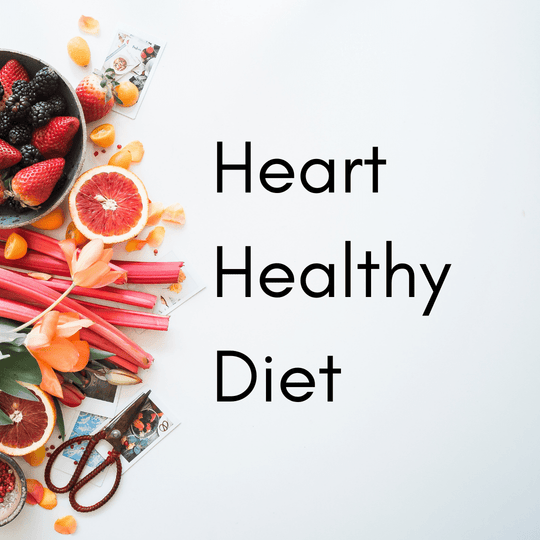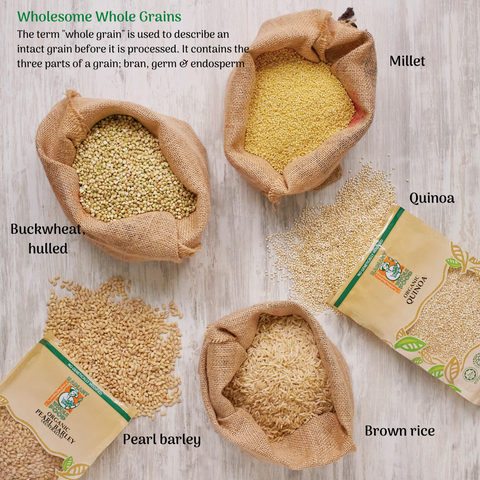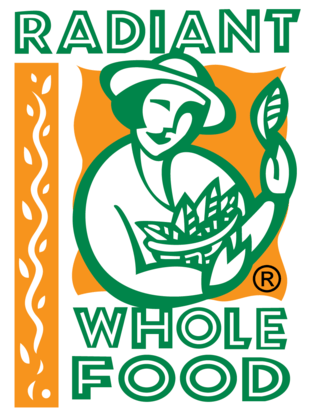
Sep 29 , 2020
Tips for a heart-healthy diet
“Cardiac diet” is an unofficial term for a heart healthy diet.
A heart healthy diet; what is it about and why is it important?
Heart-healthy eating is an important way to lower your risk of heart disease and stroke. This diet is a plan to eat plenty of nutrient-rich foods—fruits and veggies, whole grains, lean poultry and fish. And it also means avoiding saturated fats, trans fats, and excess sodium and sugar.

Include these foods into your diet to reduce your risk:
- Fruits and vegetables. At least half of your plate should be fruits and vegetables.
-
Whole grains. At least half of your grains should be whole grains. Whole grains include:
- whole wheat
- whole oats
- oatmeal
- whole-grain corn
- brown rice
- wild rice
- whole rye
- whole-grain barley
- buckwheat
- bulgur
- millet
- sorghum
- Fat-free or low-fat dairy products. These include milk, calcium-fortified soy drinks (soy milk), cheese, yogurt, and other milk products.
- Seafood, skinless poultry, lean meats, beans, eggs, and unsalted nuts.
- Nuts. Nuts have been shown to lower blood cholesterol. And for a heart-healthy nut, almonds or walnuts make a great choice. They contain plant omega-3 fatty acids, vitamin E, magnesium, calcium, fiber, and heart-favorable monounsaturated and polyunsaturated fats. Choose unsalted nuts for additional cardiac protection.
-
Flaxseed. An ancient grain that has been used in the diets of humans for thousands of years and it is one of the richest source of lignans. Flaxseed is heart-healthy because it contains Alpha-linolenic acid (Omega-3), essential fatty acids, magnesium, potassium, fiber and protein.
Changing your diet to a healthier one might not be easy in the beginning, so start in small steps.
How to start?
- Eat less fat (especially butter, coconut and palm oil, saturated or hydrogenated vegetable fats , animal fats in meats and fats in dairy products).
- Use only vegetable oil like flaxseed oil, extra virgin olive oil, grape seed oil and sunflower oil. Avoid peanut oil, palm oil and coconut oil in cooking.
- Eat more fruits, vegetables and whole grains in your diet which are low fat choices, containing zero saturated fat. If you want to eat meat, choose white meat (like fish) versus red meat. Buy lean cuts of meat and remove the skin and fat of poultry.
- Try low-fat snacks, like dried fruits, nuts and seeds and avoid fried oily snacks.
- Eat no more than 4 egg yolks a week (use egg whites or egg substitutes).
- Bake, broil, steam or grill foods instead of frying them.
- Eat fewer "fast foods" (burgers, fried foods), which are high in fat. Instead, eat more fruits, vegetables and carbohydrates (rice, pasta, breads, grains).
- Drink low-calorie beverages, such as unsweetened tea. Avoid artificial sweetener in drinks.
Important must-knows:
How much should I weigh?
If you're overweight, the extra pounds put extra stress on your heart. Losing weight will help your heart stay healthy. If you need to lose weight, remember that losing just 10% of your body weight will reduce your risks for diabetes and heart disease.
Why is exercise good for my heart?
Exercise makes your heart stronger, helping it pump more blood with each heartbeat. The blood then delivers more oxygen to your body, which helps it function more efficiently. Exercise can also lower blood pressure, reduce your risk of heart disease and reduce levels of LDL ("bad" cholesterol), which clogs the arteries and can cause a heart attack. At the same time, exercise can raise levels of HDL ("good" cholesterol), which helps protect against heart disease.
Combined with a healthy diet, exercise can speed up weight loss. Exercise is also the best way to maintain weight loss. Regular exercise also helps you burn calories faster, even when you're sitting still.
What's the best type of exercise for my heart?
Aerobic exercise causes you to breathe more deeply and makes your heart work harder to pump blood. Aerobic exercise also raises your heart rate (which also burns calories). Examples of aerobic exercise include walking, jogging, running, swimming and bicycling.
How much exercise do I need?
In general, if you haven't been exercising, try to work up to 30 minutes, 4 to 6 times a week. Your doctor may make a different recommendation based on your health. If you can't carry on a conversation while you exercise, you may be overdoing it. It is best to alternate exercise days with rest days to prevent injuries.
How will I fit exercise into my busy schedule?
There are lots of ways to raise your heart rate during your regular day. Take the stairs instead of the elevator. Walk during a coffee break or lunch. Walk to work, or park at the end of the parking lot so you have to walk farther. Walk more briskly. Do housework at a quicker pace and more often (for example, vacuuming every day.) Instead of hiring a gardener to do your garden, take up the chores of weeding, planting and mowing to be your daily exercise. It gives pleasure as well as a good sweat out!











